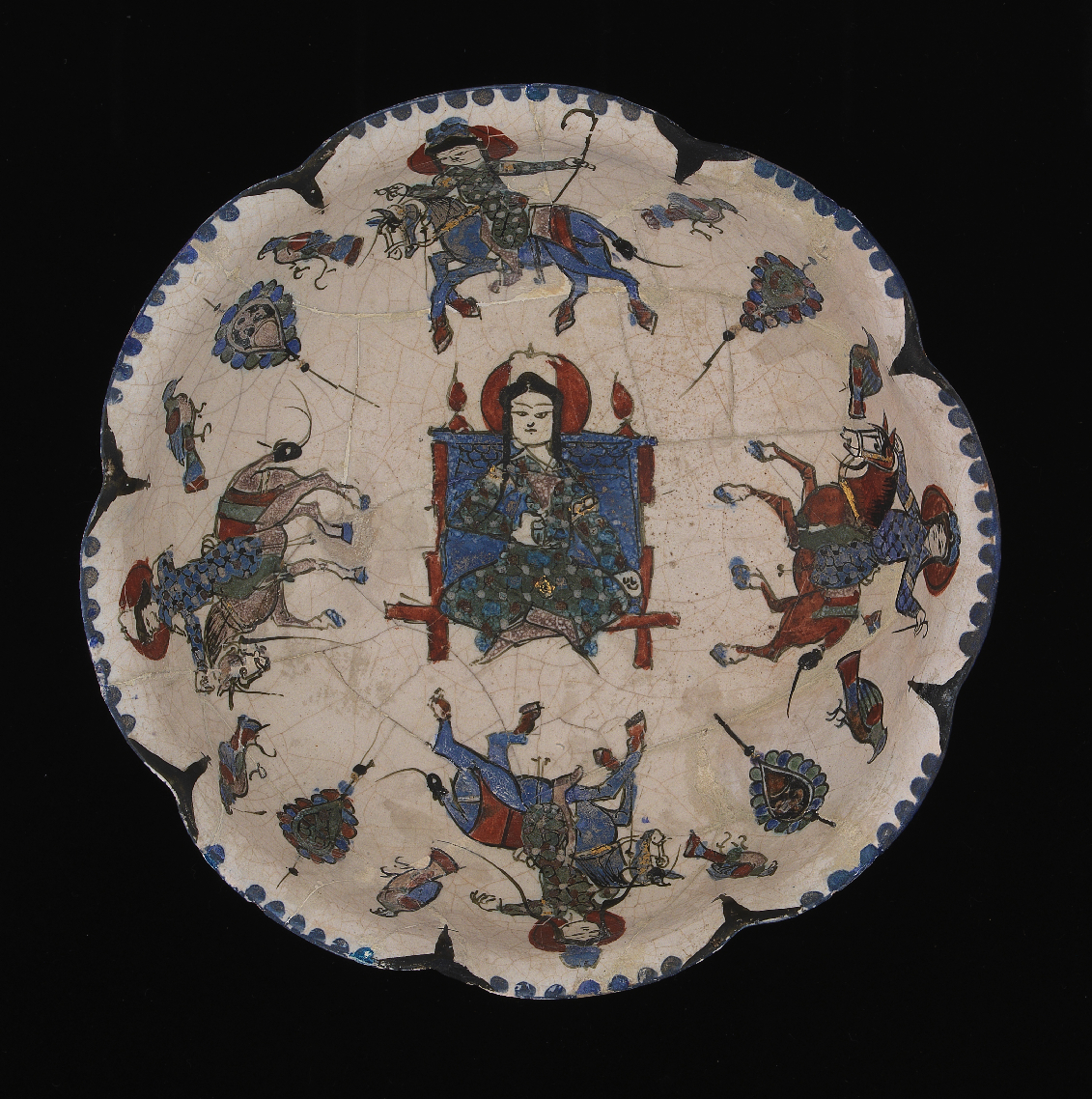
- Persia, Kashan (?), late 12th century or early 13th century
- Fritware, painted over and underglaze
- Inv. 935
Bowl
Footed bowl with foliate rim, inside a court scene is depicted referring to falcon hunting and the game of polo. In the centre a young prince is seated on a high-backed throne surrounded by four knights alternating with pairs of facing falcons. The knights are carrying polo sticks, for this was one of the favourite pastimes of the Iranian court. The rich polychrome minai decoration of the interior, contrasts with the sobriety of the exterior decoration which is solely calligraphy and expresses good wishes for a long life and power for the owner of the bowl.
This piece has Far Eastern influences as can be seen by its form and the whitish tone of the glaze. The decorative theme representing a court scene is in the Middle Eastern tradition.
Persian potters developed a technique called minai that enabled them to use a range of varied colours, a technique used in this piece that is decorated in blue, red, green, violet, black and gold.
Acquired by Calouste Gulbenkian from Kevorkian, Paris, 19 August 1912.
H. 8 cm; Diam. 18 cm
Lisboa 1963
Arte do Oriente Islâmico. Colecção da Fundação Calouste Gulbenkian, exhibition catalogue. Lisbon: Calouste Gulbenkian Foundation, 1963, no. 11.
Mota 1988
Maria Manuela Mota, Catálogo de Louças Islâmicas. Volume 1: Louças Seljúcidas. Lisbon: Calouste Gulbenkian Museum, 1988, pp. 86–7, no. 23.
Goffen 1995
Rona Goffen (ed.), Museums Discovered. The Calouste Gulbenkian Museum. Fort Lauderdale, Florida: Woodbine Books, 1995, pp. 162–3.
New York 1999
Katharine Baetjer and James David Draper (eds.), «Only the Best». Masterpieces of the Calouste Gulbenkian Museum, Lisbon, exhibition catalogue. New York: The Metropolitan Museum of Art, 1999, pp. 52–3, cat. 21.
Madrid 2001
Un jardín encantado. Arte islámico en la Colección Calouste Gulbenkian, catálogo de exposição. Madrid: Fundación Santander Central Hispano, 2001, pp. 30–, no. 1.